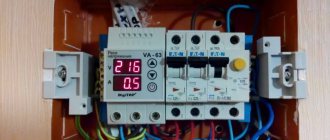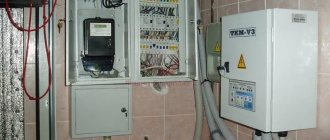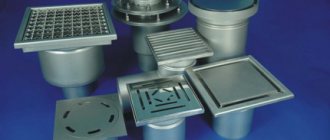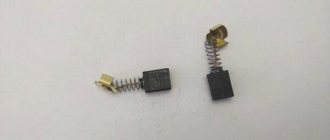No modern kitchen can do without the necessary set of household appliances, among which the refrigerator plays an important role. In order for the device to serve for many years, you should carefully approach its choice. Today's refrigerators are very different from those produced several decades ago, and the main difference is the compressor. In addition to conventional ones, there is another type - inverter refrigerators. To make the right choice and buy a quality product, you need to familiarize yourself with the features, operating principle, as well as the advantages and disadvantages of these models.
Many people know about the presence of a compressor in a refrigerator, but not everyone knows about its varieties. Modern production technologies make it possible to produce equipment with inverter compressors (such, for example, are available from Samsung or LG). This type is not yet so popular, but now it can be bought from the world's leading brands. According to experts, the inverter engine has a great future.
What are the important indicators?
Devices:
- With exact parameters. Limit 5-10%. 1-3% is ideal. Overclocking from 10% is not allowed. This is a signal that the device is not reliable.
- Silent.
- With a clear control system at instinctive levels.
- With information screens to display current parameters.
Which units require stabilizers?
You must understand for yourself whether you need such a device or not. And if you don’t know which voltage stabilizer for a refrigerator is right for you, contact a specialist.
Because if the parameters are unstable, then functional options will fall into the risky area:
- Electronic systems.
- Compressors.
- System No Frost.
Single-phase stabilizer
Will LG refrigerators with a linear inverter compressor need a stabilizer if there are voltage drops?
Experts advise buying a voltage control relay with a delay instead. Or if the surges vary between 180, 220 to -250, purchase stabilizers with a power of 2000 VA for an LG refrigerator with a linear inverter compressor.
Stabilizing devices are also desirable for Atlanteans. But experts recommend such devices with cooling convection specifically for Atlant models.
If you have refrigeration units under the Biryusa brand, then 220 V stabilizers should overcome the input current of 150 -270 V.
Indesit models with two compressors must maintain a stable voltage of 200 V. It is better to use hybrid systems.
For Samsung, choose devices with very high sensitivity. Mechanisms with a voltage of 220 V will convert mains voltages.
Install and connect
- Stabilizers are installed after the controllers.
- Standard designs have three contacts. Due to them, broken phase connections at the input and output are switched on, and “0” is connected without breaking wires.
- The contacts are soldered to the output, or twisted together.
- The wires must be insulated from each other. They shouldn't touch.
Stabilizer connection
Is your refrigerator starting to work intermittently, twitching? Be sure to purchase a voltage stabilizer so that the refrigerator with its power will be delighted with the operation of the network.
Voltage relay
A voltage relay is the simplest and most affordable way to protect a refrigerator from severe voltage surges. This device does not improve the quality of power supply, it is only a way to control the mains voltage.
Functionally, this is an electromagnetic relay operating under the control of a microcontroller. As soon as the microcontroller detects an unacceptable voltage value, the relay opens, de-energizing the consumer for protection purposes. Relays can be designed either for installation in a panel (protection of all equipment) or for installation in a socket (protection of one individual electrical appliance). For a refrigerator, most likely, the second option is preferable.
Unlike other means of protection, any voltage relay is adjustable. If you don’t know how to set up a voltage relay for a refrigerator, open the manual for your model and find the restart delay time setting. This parameter is needed in order to wait a pause after the protection is triggered before restoring power. During this pause, the pressure in the compressor stabilizes and it is safe to start again. Typically this setting is set to 5 minutes. As for other parameters, such as response delay, upper and lower shutdown thresholds, they can be neglected by using the optimal parameters set from the factory.
The main advantage of a voltage relay is its price. If problems rarely arise on the network, you can get by with such an affordable control tool.
Choosing a voltage stabilizer for the boiler
Reliable and trouble-free operation of gas generators is possible only if certain conditions are met, namely the presence of a high-quality power supply. Unfortunately, it is with this indispensable condition that problems most often arise. To solve this problem, it is necessary to install a voltage stabilizer for the boiler. First of all, let's look at the reasons why we want to install a voltage stabilizer, and then we will dwell on the question of what kind of voltage stabilizer we need for the boiler.
What is the danger of voltage fluctuations for heating equipment?
- Despite the fact that the controller (or, more simply, the computer that controls the boiler) has its own voltage stabilizer, its normal operation is guaranteed at a supply voltage of 220 plus or minus 10% V. A failure in its operation can create an emergency situation.
- The boiler fittings include solenoid valves and gate valves. Low voltage leads to their incomplete closing or opening, and high voltage leads to failure. These circumstances also require installing a voltage stabilizer for the boiler.
- Changing the fan operating mode leads to a change in the composition of the fuel mixture and unstable combustion.
- If there are significant deviations in the supply voltage, fans and pumps have a high probability of failure.
Almost all manufacturers of heating equipment recommend installing a voltage stabilizer in the boiler, and for many this is one of the conditions for providing a guarantee.
In addition, to power the boiler, I recommend the use of an Uninterruptible Power Supply (UPS) of the Online type, so that during short-term power outages the boiler continues to operate. We are talking about a shutdown time of 5-60 minutes, depending on the capacity of the UPS battery. In addition, the Online UPS with double conversion produces a pure sine wave and protects the boiler electronics from possible short-term (less than 10 ms) power surges, which no stabilizer will have time to cope with.
The UPS must be special for boilers, with a through zero - for proper ignition operation.
Such expenses will pay off over the long service life of the boiler. The consolation is that the stabilizer for the boiler should have low power - no more than 500 VA.
Which is better - inverter or linear
Rather than talk for a long time about the superiority of one species over another, let’s take a look at the table where we have summarized the main parameters and differences of each species.
Comparison table
| Characteristic | Differences: linear/inverter |
| Resource | Service life is limited/guaranteed for 10 years |
| Power-on current | Maximum at every power on / only at startup |
| Network load | Frequent power surges / no problem |
| Noise level | Relay clicks, compressor operation / almost silent |
| Adjustment | Identical in temperature inside |
| Wear of parts | Large/small |
To understand exactly which compressor works, you can compare them with the movement of a car: in the first case there are bumps and alternating ascents and descents, and the second is a highway with a perfectly smooth surface and slight curvature in turns.
Types and principle of operation of the stabilizer
For what purposes is a stabilizer needed? The name of the device itself already indicates its operational purpose.
Instability of the network voltage, for example, supplied to a country house, is manifested by voltage surges. Such jumps can reach 30% (220*30100 = 66), that is, almost a third of the total voltage.
Electrical equipment of this design ensures the stability of electricity in the country. And uninterrupted power supply is a guarantee of the integrity of used household and household appliances
Such conditions of decreasing (or increasing) the supply voltage to 60-70 volts can lead to a tragic situation with expensive equipment - failure with subsequent repairs.
The same situation is fraught with an increased risk component regarding the occurrence of a fire. Therefore, the conclusion is obvious - where there is instability of the mains power supply, connecting a voltage stabilizer becomes a mandatory procedure.
Considering the principle of operation of such devices, it is worth noting the division of devices by performance class. There are three types of designs: electromechanical, relay, electronic.
Electromechanical type of devices
The operation of the first type of structure is based on the actions of the transformer servo drive. The servo drive moves the slider part on the windings of the transformer, due to which the output voltage is regulated.
An example of an electromechanical stabilization device. Constructions of this kind, as a rule, are attractive due to their low cost, but provide relative quality
Devices of this type are capable of providing output stability with an accuracy of 2-5%. But given the mechanical design of the system, it would be wrong to talk about high reliability. In addition, this is a fairly noisy type of converter.
Relay type stabilizers
The second type of device, relay, also uses a transformer regulation technique.
The difference lies in the use of a system of switches between the turns of the transformer windings, instead of a slider mechanism.
The design of a relay stabilization device, with the help of which there is a real opportunity to establish an uninterruptible supply voltage at the dacha. This is an important factor in terms of the safety and preservation of consumer electronics.
Relays are used as switches in relay installations.
In terms of operation, this technique is actually comparable to devices using servomotors. And the cost of the equipment is practically not inferior to electromechanical systems.
Electronic type of devices
The third type is electronic, the most preferred choice, despite the high cost. The cost of electronic stabilizers, meanwhile, pays off fairly quickly, given the benefits the equipment brings to the end user.
The design of the device uses electronic stabilization technology. Equipment of this type is considered the most reliable and high-quality in operation compared to other types
The basis of such systems is electronics assembled on the basis of powerful thyristors (triacs). The so-called electronic switches - thyristors and triacs - are characterized by fast switching times, measured in milliseconds.
Thus, the moment of switching remains unnoticed by the user. In addition, any noise is completely excluded.
Electronic stabilizers have durability properties that significantly exceed the durability of relay and mechanical devices.
Electronics-based technology provides a high level of stabilization (no more than 1-1.5% error). Accordingly, now this is the best choice for almost any operating conditions.
Pros of an inverter refrigerator
Inverter refrigerators have their own advantages and disadvantages. Despite some disadvantages, the product is in demand by consumers.
The main advantages of the device are:
- Reduced energy consumption. According to manufacturers, compared to linear compressors, consumption can be reduced by even 40%.
- The service life of the device has been increased. Since the power is less, its individual parts have a reduced mechanical load. That is why they do not wear out very quickly during operation. This may explain the fact that manufacturers guarantee each of their devices for up to ten years of uninterrupted operation.
- The work process is silent. The effect is explained by the low speed of the inverter.
- Food storage conditions have been improved. Thanks to the inverter compressor, there are no temperature changes. After all, the operating mode is constantly smooth. As a result, food lasts for a long time.
Types of stabilizers for refrigerators
Devices designed to stabilize voltage differ in both design, output power, and operating principle. Based on these characteristics, there are three types of refrigerator stabilizers: electromechanical, also known as servo drive, relay, triac or electronic.
The photo shows all three types of stabilizers: servo drive - the cheapest, relay, electronic - the most reliable, stable, but also expensive
Stabilizers are also divided by type of electrical network. They can be single- and three-phase. The first ones have compact dimensions, and since There is no cooling fan in their design; they make almost no noise during operation. The output voltage is monitored continuously, but the level of response to the input voltage is quite low.
For houses powered by a 380 V power supply, three-phase stabilizers have been developed that are designed for heavy loads, but when one of the phases fails, the protective mode does not work. Depending on the type of voltage in the network, devices are divided into those operating with low, high and intermittent voltage.
Electromechanical type devices
Servo-drive devices control the pantograph drive and monitor voltage parameters via an electronic board. High accuracy is their main advantage; the error is only 2-4%. The disadvantage is the speed caused by the inertia of 10-20 volts.
Electromechanical stabilizer - view from the inside. The slider, moving along the turns of the winding, changes the output voltage. A large number of nodes makes such devices short-lived
Such a stabilizer works well under conditions of either slowly changing voltage, or consistently low, or high voltage. If there are strong abrupt changes, the device will quickly become unusable. Such conditions are most often observed in dachas and country cottages, so this option is not suitable here.
Relay type stabilizer
A simple relay type stabilizer control system can withstand significant differences. On its electronic unit, as well as on the controller, there are power relays, which are responsible for switching the transformer windings. The transition occurs extremely quickly - in just 0.5 seconds.
The photo shows a relay type stabilizer. This equipment is the most common in everyday life. Often consumers are attracted by its relatively low cost
The weak link is the microcontroller. It can burn out if it cannot withstand the excessive mobility of the input voltage.
The work of switching transformer stages is accompanied by clicking noises, which does not add comfort to the home. Such models are intended for use in networks where rapid voltage reboot occurs constantly.
System models of devices
There is no such element as a relay in the electronic stabilizer; the control is managed by semistors, which quickly respond to the slightest changes in the network. The absence of mechanical contacts makes it possible to carry out multiple switching noiselessly during power outages.
Thyristor stabilizer SKAT ST-12345. It covers a wide range of input voltages, is characterized by high power and stabilization speed, and complies with all domestic and international standards
They can withstand voltage overloads of up to 20% for 12 hours, and up to 100% for one minute. Manufacturers of system stabilizers place high demands on the quality of parts and assembly accuracy, so both the durability and cost of the devices are appropriate.
Rating of the best inverter refrigerators and prices
Each manufacturer of household appliances has successful and not so successful models of refrigerators. Based on an analysis of consumer interest, customer reviews and a survey of service center employees, you can create a list of the most reliable and worthy options.
The ranking of the best inverter refrigerators in 2022 is as follows:
- 5th place goes to the budget refrigerator LG GA-B429 SMQZ. Country of origin: South Korea. This model is considered one of the most successful from the company. A modern electronic control unit ensures the efficiency of the device, and with the help of a corresponding mobile application it is possible to set certain settings from a smartphone. The refrigerator is quite spacious - the volume of the chambers is 302 liters. The unit is equipped with a Total No Frost system, and therefore does not require defrosting. Sections for vegetables and fruits have a special mesh lid, with the help of which it is possible to constantly maintain the humidity necessary for their preservation. Most consumer reviews of this model are positive. However, there is a note: if the refrigerator door is not opened wide enough, it makes it difficult to pull out the vegetable box. If it is placed too close to the wall, housewives will experience some inconvenience. The popularity of the LG GA-B429 SMQZ refrigerator is due to the optimal price-quality ratio. The cost of such a unit is around 37,000 rubles.
- In 4th place is another South Korean refrigerator, Samsung RS-552 NRUASL. It is very roomy, its volume is 538 liters. At the same time, it has quite moderate energy consumption - 431 kWh/year. One of the nice features is the presence of a differentiated super-freezing mode. The refrigerator is equipped with a No Frost system. The disadvantage of this model is considered to be its low freezing ability: it is capable of “processing” only 12 kg of food per day. For a unit of this class, this is a rather unsatisfactory indicator. However, consumers unanimously note that the price of the Samsung RS-552 NRUASL is not at all overpriced. You can purchase this reliable and progressive refrigerator for 76,000 rubles.
- The 3rd position is occupied by a premium product from Japanese manufacturers of household appliances. The Sharp SJ-GF60AR/AT refrigerator won the bronze medal. Its 5 chambers have a total capacity of 483 liters. What makes this refrigerator attractive is its effectively implemented advanced technologies. One of them is a built-in ionizer, which helps destroy spores, mold, mildew and improves the air in the chambers. The unit also has modes for rapid cooling of hot dishes and blast freezing. The automatic ice maker produces cubes in two sizes. The No Frost system allows you to forget about manual defrosting. The cameras are equipped with LED lighting. Despite the abundance of functionality, this unit belongs to energy consumption class A+. In addition to its performance characteristics, the refrigerator attracts with its unusually stylish design. The six-door design has a perfectly smooth surface thanks to frameless glass with gradient coloring. However, such a bonus requires constant care. The cost of Sharp SJ-GF60AR/AT is 130,000 rubles.
- The Samsung unit is again in 2nd position in the ranking. Model RH-60 H90203L is distinguished by ergonomics and attractive appearance. The surface of the refrigerator is colored “noble bronze”. This design solution does not leave indifferent those who are accustomed to appreciating beautiful things. In addition to its visual appeal, this inverter refrigerator has other advantages. The original double door and adjustable folding shelf allow you to model the internal structure of the refrigerator depending on specific tasks. The device is equipped with a No Frost system and a super freezing function. The refrigerator doors have an LED display that displays information about the temperature level. Another plus of the RH-60 H90203L is its impressive volume. The total capacity of the refrigerator is 605 liters. The price for this inverter unit is 135,000 rubles.
- 1st place goes to the Panasonic NR-BY602XCRU refrigerator. This is a very reliable and durable equipment with wide functionality and modern controls. The total volume of the refrigerator is 602 liters. Despite its impressive dimensions, the product belongs to energy consumption class A+. Defrosting system – No Frost. Modern additional options for this refrigerator include an antibacterial filter, a deodorizer, a control panel on the doors, and an LED display. It should also be noted that the Panasonic NR-BY602XCRU camera is equipped with a “vitamin preservation” function. Among the advantages of this unit are low noise level and fast freezing of food. The model belongs to the middle price segment. The cost of Panasonic NR-BY602XCRU is about 88,000 rubles.
Selecting a power stabilizer
Power is the main characteristic of the stabilizer, according to which it is selected. It is absolutely clear that the power of the stabilizer should be slightly greater than the total power of all consumers. Thus, before choosing a voltage stabilizer, you need to correctly determine the total power consumption of the devices that are to be protected.
It is worth considering that power consumption is divided into active and reactive, which make up the total power consumption of the device. Typically, devices indicate active power consumption (in watts, W), but depending on the type of load, reactive power should also be taken into account. Thus, when calculating the power of the stabilizer, you need to take into account the total power consumption, which is measured in volt-amperes (VA).
- S—apparent power, VA;
- P—active power, W;
- Q - reactive power, VAR.
The active load is directly converted into other types of energy - light or heat. Examples of devices with purely resistive loads include heaters, irons and incandescent lamps. Moreover, if a device has a power consumption of 1 kW, then a stabilizer with a power of 1 kVA is sufficient to protect it.
Reactive load occurs in devices with electric motors, as well as in various electronic devices. In devices with rotating elements they speak of an inductive load, and in electronics - a capacitive load.
On such devices, in addition to the active power consumed in watts, one more parameter is usually indicated - the cos(φ) coefficient. With its help, you can easily calculate the total power consumption.
To do this, the active power must be divided by cos(φ). For example, an electric drill with an active power of 700 W and cos(φ) equal to 0.75 has a total power consumption of 933 VA. On some devices the cos(φ) coefficient is not indicated. For an approximate calculation, it can be taken equal to 0.7.
When choosing a stabilizer, it is important to take into account the fact that some devices have a starting current that is several times higher than the rated current. An example of such devices can be devices with asynchronous motors - refrigerators and pumps
For their normal functioning, a stabilizer is needed, whose power is 2-3 times higher than consumed.
Table 1. Approximate power of electrical appliances and their power factor cos (φ)
| Household electrical appliances | Power, W | cos(φ) |
| Electric stove | 1200 — 6000 | 1 |
| Heater | 500 — 2000 | 1 |
| Vacuum cleaner | 500 — 2000 | 0.9 |
| Iron | 1000 — 2000 | 1 |
| Hairdryer | 600 — 2000 | 1 |
| TV | 100 — 400 | 1 |
| Fridge | 150 — 600 | 0.95 |
| Microwave | 700 — 2000 | 1 |
| Electric kettle | 1500 — 2000 | 1 |
| Incandescent lamps | 60 — 250 | 1 |
| Fluorescent lamps | 20 — 400 | 0.95 |
| Boiler | 1500 — 2000 | 1 |
| Computer | 350 — 700 | 0.95 |
| Coffee maker | 650 — 1500 | 1 |
| Washing machine | 1500 — 2500 | 0.9 |
| Power tools | Power, W | cos(φ) |
| Electric drill | 400 — 1000 | 0.85 |
| Bulgarian | 600 — 3000 | 0.8 |
| Hammer | 500 — 1200 | 0.85 |
| Compressor | 700 — 2500 | 0.7 |
| Electric motors | 250 — 3000 | 0.7 — 0.8 |
| Vacuum pump | 1000 — 2500 | 0.85 |
| Electric welding (arc) | 1800 — 2500 | 0.3 — 0.6 |
In addition, the manufacturers themselves strongly recommend using stabilizers with a 20-30% power reserve.
Precision stabilization for optimal instrument protection
When choosing a stabilizer, you should also take into account the maximum permissible voltage drop range for the devices to be protected.
If we are talking about protecting lighting devices, then for them it is necessary to choose a stabilizer with a voltage stabilization accuracy of at least 3%. It is this accuracy that will ensure that the lighting does not flicker even with fairly sharp power surges in the network.
Most household electrical appliances are able to operate normally with voltage fluctuations within 5-7%.
What should I do - install one stabilizer for all consumers, or for each one separately?
Of course, ideally, for each device that needs to be protected from power surges, a separate stabilizer of appropriate power and stabilization accuracy should be installed.
However, from the point of view of material costs, such an approach cannot be justified. Therefore, most often the stabilizer is installed on the entire set of consumers, and its power is calculated based on the total power consumption. However, another approach is also possible.
For example, a stabilizer can protect one device. In addition, we can identify a group of electrical appliances, the protection of which from voltage surges is an urgent need, and a stabilizer is installed to power them, while the rest, which are not so important and sensitive to surges, are left without protection.
Price
All stabilizers that meet the declared characteristics and have quality certificates have a fairly high price - from 6,000 rubles and much higher (up to several tens of thousands of rubles, depending on the power). The table shows the most popular models of the current year:
| Model | Power | Range | Type | Price |
| Calm R 500i | 500 W | 90…310 V | double conversion | 6400 rub. |
| RUCELF SRWII-12000-L | 10 kW (12 kVA) | 140…260 V | relay | 14300 rub. |
| PROGRESS 8000TR | 6400 W (8000 VA) | 120…245 V | thyristor | RUR 38,500 |
| Lider PS10000W-50 | 10000 VA | 128…320 V | thyristor | RUR 46,700 |
| ENERGY ARS-1500 | 1500 VA | 140…260 V | relay | 6500 rub. |
| Calm R 800 | 800 VA | 165…265 V | relay | 6300 rub. |
| BASTION SKAT-ST-1300 | 1300 VA | 145…260 V | relay | 6250 rub. |
If purchasing such devices is beyond your means, you will have to lower the bar and look at Chinese-made equipment. But here you need to be very careful when choosing. Here is a list of Chinese products that, judging by reviews, have proven themselves very well on the Russian market:
| Model | Power | Range | Type | Price |
| RESANTA LUX ASN-500N/1-C | 500 W | 140…260 V | relay | 2000 rub |
| Defender AVR Initial 2000 | 955 W (2000 VA) | 175…285 V | relay | 3140 rub. |
| SVEN AVR SLIM 2000 LCD | 1600 W (2000 VA) | 100…280 V | relay | 3100 rub. |
| Era STA-1000 | 1000 W | 140…270 V | relay | 2900 rub. |
| Powercom TCA-2000 | 1000 W (2000 VA) | 176…264 V | relay | 1800 rub. |
| SVEN AVR SLIM 1000 LCD | 800 W (1000 VA) | 140…260 V | relay | 2200 rub. |
| Ippon AVR-3000 | 3000 VA | 140…280 V | relay | 3950 rub. |
All of the listed single-phase stabilizers have a wire with a plug and output sockets. Connecting a refrigerator through the stabilizer is very simple - plug the refrigerator plug into the socket on the stabilizer body and turn on the device.
Devices with a power of up to 2 kW do not have fans, since natural air circulation through the ventilation holes in the case is sufficient for them. Therefore, the only noise they make is when the power relays switch. Stabilizers with electronic stabilization (using thyristors) operate completely silently.
Poorly assembled stabilizers can hum like old Soviet transformers.
Depending on the design of the device, they are placed next to the refrigerator or on the floor or on the wall. Can be placed directly on the refrigerator. All low-power stabilizers are quite compact and do not take up much space.
TOP 3 best models
Today we can highlight three of the most popular products that efficiently perform their intended function.
LG-2500
This is the most expensive option, which provides a power rating of around 2.5 kilowatts. This parameter allows you to service a refrigerator, boiler, iron, washing machine. Atlant (SNVT-1500) A suitable device for voltage stabilization for refrigeration units - brand Atlant, model Energy
Atlant (SNVT-1500)
SNVT-1500
Its cost is 5,000 rubles. The device is characterized by small dimensions, which makes it easy to carry. The output power is within 1 kilowatt. This is a single-phase type that is rated for 100-280 volts.
SNVT-1500
Voltron PCH-1500
Voltron PCH-1500
It is better to make the final decision in choosing one model or another after reading our article and based on real reviews from owners. You will need knowledge in order to select the correct device that will protect any device from power surges.
It’s better to pay more once than to have to deal with repairs or buying a new refrigerator later.
Summing up all of the above, I would like to remind you that a certified product from a trusted manufacturer will protect you from possible problems and equipment repairs. It’s better to pay more once than to have to deal with repairs or buying a new refrigerator later.
REPAIR OF ANY BRANDS
| We repair refrigerators with inverter compressors of all brands | ||
| Samsung | LG | Hitachi |
| Mitsubishi | Sharp | Kaiser |
| Panasonic | Ascoli | Bosch |
| Comfee | Daewoo | Ginzzu |
| Gorenje | Haier | Hiberg |
| Hisense | Hitachi | Hotpoint-Ariston |
| Hyundai | IO Mabe | Jacky's |
| Korting | Kuppersberg | Liebherr |
| Lofra | Maunfeld | Midea |
| Siemens | Smeg | Snaige |
| Tesler | Toshiba | Whirlpool |
| Winia | Xiaomi | Zarget |
What power is needed for a voltage stabilizer for a refrigerator?
It is necessary that the stabilizer maintains constant power for the refrigerator. The passport and the sticker with the input data indicate what power, voltage and current frequency is consumed by the device.
But this is an average value; to find out the total power, you need to divide the average by 0.65 and multiply by 3. This will be the desired value, taking into account the starting surges in VA. Our Atlant consumes 120 W: 0.65 x3 = 600 VA
It is this indicator that is included in the stabilizer’s passport, and the curve will help determine how many watts the device will produce at low voltage. So, if a stabilizer with a power of 1000 VA at a nominal value of 220 V has 1000:220 = 4.55 A in the line, then at a voltage of 160 W it will provide a power of 160 x 4.55 = 720 VA. This will be enough even taking into account the losses.
If you have a passport for the refrigerator, your sales consultant will help you choose what power stabilizer you need. Factory data is considered important:
- Operating power.
- Number of compressors and fans.
- Number of cameras.
- Starting current.
You will need to decide on the type - choose an electromechanical, relay or electronic device. They differ in functionality and price.
How to check a refrigerator compressor: is it working or not?
A faulty motor is a common problem. Therefore, you need to check it first.
The list of standard causes of compressor failure looks like this:
- short circuit of the starting or working winding;
- winding breakage;
- short to ground (to body);
- “wedge” of the compressor, when the motor hums but does not work;
- damage to contacts;
- inverter failure (in inverter compressors);
- malfunction of the refrigerator control board in the compressor connection circuit.
Let's start analyzing breakdowns from the end. Only a master can find a breakdown in the control unit or check the contacts. Knowledge at the level of “I can install an outlet” will not be enough. Digging into the circuit, you risk damaging something important, and then repairs will be needed not only for the faulty compressor.
You can check short circuits and breaks in the engine yourself. You will need a clamp tester, an ohmometer or multimeter and a couple of hours of free time.
Attention! Unplug the refrigerator whenever working with electrical equipment.
This is for your safety and to keep testers alive. The devices will burn out if you “ring” the live contacts. In addition, half the voltage, approximately 110 V, may “sit” on the refrigerator body due to the noise filter (capacitor) in the circuit if the home wiring is not connected to a protective zero that provides grounding.
This voltage is not dangerous due to the low current without contact with other metal objects and the body at the same time. But when moving a refrigerator that is not de-energized, you may accidentally touch the battery, riser or stove.
Checking the refrigerator cable
Before handling the motor-compressor, check the equipment cable. Sometimes malfunctions are associated with poor condition of the supply wire. Inspect the cable for breaks in the insulation and severe bends. Damage to the outer shell may indicate damage to the cores. If the insulation is broken or the core is broken, the voltage may drop. Therefore, the engine starts with difficulty or only once.
Inspect and test the plug. The pins may be wobbling or look burnt. This indicates overheating and possible internal contact failure. At the same time, inspect the outlet. If it “dangles”, then the plug does not hold well, and the voltage periodically drops.
Are the cable, plug, and socket OK in appearance? Then we will deal with the compressor.
Short circuit to the housing - how to check the refrigerator motor
A short to housing often causes compressor failure. The initial insulation resistance of the motor is 1000 MOhm; during operation, the quality of the insulation deteriorates and the resistance value drops to 100 or even 10 MOhm. When the value drops to 1 Megaohm, the motor must be replaced, and when measuring below 500 kOhm, it is prohibited to use the equipment.
Therefore, before diagnosing, it is necessary to check the engine for breakdown, so as not to receive an electric shock from a faulty device when checking the energized current. To measure, you can use a multimeter, ohmmeter or megohmmeter.
- Unplug the refrigerator.
- Remove the compressor panel, if equipped.
- Remove the starting or starter relay from the motor contacts.
- Switch the tester to resistance measurement mode.
- Look for any peeling paint on the engine housing. Or clear a small area.
- Attach one probe of the device to the lower left or right contact, and the second to the motor housing.
- Check the indicator. In a working engine, the tester will show the value as “infinity”. If the insulation is broken, a value close to zero will appear on the screen.
- The most accurate indicator will be given by a megohmmeter or multimeter with a constant voltage mode of 500 V.
Attention! If you find a breakdown of the windings, call a technician. Using a refrigerator with such a compressor malfunction is life-threatening.
What is the difference between a short to ground and a short to ground? An engine shorted to ground will produce a complete zero, and most likely will not work. When shorted to the body, the resistance has a low value, but differs from zero. The circuit breaker does not respond to such motors, but they are dangerous to operate and require replacement. The RCD also does not respond to a short circuit to the housing, because there is no current leakage in the refrigerator circuit, there is only voltage on the compressor casing.
Did the tester show a break? This means there is no short circuit to the case and you can test further.
How to check the refrigerator compressor with a multimeter for serviceability
The motor contact terminals are arranged in a triangle. The top one is called common, the left one comes from the starting winding, the right one from the working winding. The resistance value between the contacts of the windings is approximately equal to the sum of the indicators between the pairs “upper common - starting winding” and “common - working winding”.
The indicators are measured in this order:
- top and left contact (start winding);
- top and right (working winding);
- left and right (between windings).
The need for a stabilizer
It doesn’t matter what brand the refrigerator is, new or old, dry frozen or drip - any refrigeration unit is powered by electricity, the quality of which is getting worse every year. The reason for this lies in network overload, which occurs when the total voltage limit consumed by all residents of the house is exceeded
If it is multi-apartment, power outages are more likely a pattern than an accident.
Many modern refrigerator models have built-in voltage stabilizers, which supposedly protect against voltage surges. But, as practice shows, this fact is nothing more than a marketing ploy that increases the popularity of the manufacturer and sales of the product. The existing built-in stabilizers in refrigerators are not capable of being strong enough to cope with severe network overloads. They can also fail (without the user noticing), thereby endangering the refrigerator itself.
Why does the compressor motor in the refrigerator fail?
Like any other, a refrigeration motor-compressor breaks down for four main reasons:
- Incorrect operation of the refrigerator. The refrigerator is installed next to a heat source: a radiator or stove, so the engine overheats. Elevated temperatures can cause breakdown of winding insulation. If the refrigerator is connected to a network with large differences in voltage or current without a stabilizer, surges in electrical values can cause insulation overheating. Prolonged overheating violates the integrity of the windings and leads to a short circuit or break.
- Engine wear . The motor has a working life of hours. After its depletion, productivity drops and the insulating properties of the windings deteriorate. The engine loses power, runs longer without rest, which causes it to overheat. The resistance of the windings becomes lower, the insulation heats up and cracks. Because of this, a short circuit, break or breakdown on the housing may occur.
- Factory defective engine. Although marriage is a rare reason, it does happen sometimes. During assembly, the winding insulation, contacts, piston or compressor valves may be damaged. During testing, defects will not appear, but when the refrigerator is operating, defects will quickly “come out”, and the equipment will have to be sent in for warranty repair.
Have you checked the refrigerator motor for operation and found a malfunction? Call Ice Man! The technician will come and install a new compressor. We repair after the application within 24 hours, we give a 2-year guarantee on installed components, spare parts and maintenance.
Source
Tips for choosing a stabilizer
Actually, the task of choosing a voltage stabilizer for installation in a country house or in a country house is solved in the traditional way, typical for the selection of this type of equipment.
The selection procedure is as follows:
The manufacturer with the most user liking is determined based on reviews and ratings. A device that meets your needs is selected from the manufacturer’s assortment based on its technical characteristics. Also, at the time of selection, it is recommended to pay attention to the design and installation options.
The main point on this list for a consumer choosing equipment, of course, seems to be the second point. The remaining two can be noted as secondary criteria.
Based on the list of technical characteristics that can always be found on manufacturers’ websites, it will not be difficult for a potential stabilizer owner to choose equipment for their dacha (house).
Active power parameter
The first technical parameter of choice is the active power of the device. This value, measured in kilowatts (kW), determines the load capacity of the device.
The entire operational set of parameters and technical characteristics is always presented in the documentation, which is necessarily included in the set of branded equipment
For country farms, where the electrical circuit is loaded with a classic set of household electrical appliances, a 5 kW stabilizer is sufficient.
Sometimes owners suggest using more powerful equipment, for example:
- woodworking machines;
- electric boilers;
- pumping equipment;
- welding equipment, etc.
In such situations, a 5 kW stabilizer is no longer enough. Here you will need equipment with a power level of 8-10 kW.
Optimal type of stabilizer
The technological design of a voltage stabilizer is a criterion no less important than power. Here the main selection principle is the class of connected household appliances.
If you consider that almost all modern household appliances are digital, then the choice is obvious - you need an electronic stabilizer for your dacha (or home).
It is not excluded to install several devices at once in a dacha if this is required by a three-phase network, large areas of the building or saturation with various types of household equipment
For a slightly different option, when power equipment has a higher priority, relay or electromechanical stabilization is a completely suitable choice. And in case of optimal protection of any household appliances, it seems practical to choose an inverter-type stabilizer.
Additional selection criteria
In most cases, professional energy concepts such as “voltage range”, “bypass mode”, “system cooling”, etc. are alien to the average user. However, when choosing a voltage stabilizer, it is recommended to become more familiar with such concepts.
This will give a chance for a more accurate selection of equipment in relation to operating conditions. So, the wider the range of input voltages, the more universal the use of the stabilizer will be.
The selection of a stabilizer, by and large, can be done based on the designations indicated on the body. But the best choice ensures a thorough study of all the characteristics of the device
The presence of a bypass mode also provides versatility of operation. The efficiency of the device depends on the cooling system used.
Some DIY enthusiasts assemble a voltage stabilizer with their own hands, using a power transformer from a TV. Detailed instructions for manufacturing the device are offered in the article - Do-it-yourself powerful voltage stabilizer: circuit diagrams + step-by-step assembly instructions
When to check the compressor - signs of malfunction
The motor-compressor is an important working unit of the refrigerator, which ensures the circulation of refrigerant through the piping system. The motor is located at the rear at the bottom of the refrigerator. It can be located in a closed compartment behind the panel or in an open niche.
Most old and new models have linear compressors connected via a relay.
In improved modern ones - inverter ones controlled through a current converter. The motor is connected to them via a terminal block.
By design, compressors are divided into piston (the majority of them) and rotary. But the signs of a malfunction are common to all. The main list includes:
- elevated temperature in only one or both compartments;
- the unit turns on, works for a few seconds, then the relay clicks and the motor turns off, after a while the cycle repeats, the compressor housing gets very hot;
- The engine does not start, the body does not heat up.
the compressor works constantly, with very short rest periods;
What power stabilizer should I take for a refrigerator?
The passport for the device contains the main technical characteristics, including power. But to calculate the required power, we need not the consumed power, but the total power (in VA). This value is the most important characteristic when choosing a stabilizer.
To obtain its value, you need to divide the active power (indicated in the passport) by 0.65. But this is not enough. Since the refrigerator uses significant starting currents, the value must be multiplied by a factor of 3.
Specifications
Let's look at an example. Let's say the passport indicates that the power consumption of the refrigerator is 0.15 kW. Then the total power is one hundred fifty divided by zero sixty-five and we get 230.76 VA. We multiply this value by 3 and get 692.3 VA. Let's round the value up and get 700 VA. This means that we need a stabilizer that, at the lowest output voltage, will produce 0.7 kW.
Compressor operating principle
That is why refrigerators began to be called inverter, since this is the principle of operation of the compressor, that is, the main power unit, which is found in any device of this type. Their operation differs from the operation of linear compressors in that they can change the engine speed. That is, the device allows a smooth transition from one operating mode to another.
Linear compressors are started at their maximum power. Automatic shutdown occurs as soon as the refrigerator reaches the set temperature. The relay regulates operating processes that are associated with starting and stopping.
It is inherent for this element to create an accompanying sound at the moment of operation. It is very similar to a click. When the engine is running, it creates sounds and noises that can be clearly heard by others.
IMPORTANT! Please note that such compressors are also used in the manufacture of computer and medical equipment, as well as in the automotive industry and in the production of measuring instruments.
Constantly starting the engine at full power, alternating with stops, leads to the compressor overheating. And soon the refrigerator will fail. In addition, when the engine is turned on every time, this leads to an increase in the load on the electrical network. There are unnecessary energy costs. It's not economical.
IMPORTANT! The solution that can optimize the efficiency and duration of operation of cooling devices is an invention that has become an alternative to outdated devices. In this case, we are talking about inverter models.
What is the principle of operation:
- the compressor turns on;
- during operation it cools the inner chamber;
- the inverter’s action is aimed at maintaining the specified temperature in the chamber;
- With such a system, the compressor, when it temporarily slows down, does not turn off completely.
The operation of the device is smooth. In order to show the difference in the operation of linear and inverter compressors, a comparison can be made with how a car engine works. An inverter is a car moving along a perfectly flat road. And a linear compressor means moving along a dirt road. And it's uneven. It has steep ascents and descents.
If we take the improved models, then brushless, three-phase motors are used in them. They are also used in the manufacture of modern equipment. Both measuring and medical. And also in the production of modern engineering developments.
What is the essence of the work of inverter compressors? Using the control unit of the device, alternating current is converted into direct current. And then the current changes again to an alternating form. But it already has a different frequency, which is necessary in this case.
IMPORTANT! This process is called inversion, that is, it is a change. The transformation that is carried out makes it possible to adjust the output parameters of any load with great accuracy. Including the compressor.
According to those who produce such equipment, the inversion principle makes it possible to make energy costs more economical. Stable operation of the compressor, when precise output parameters are set, allows for temperature control inside refrigeration and freezer chambers with great accuracy and speed.
Do-it-yourself compressor replacement, step-by-step process
Repair of this unit (replacement of gaskets, rings, individual engine parts in one of the units) is possible if it is not too worn out. If the device is old and on its last legs, it is better to buy a new compressor for the refrigerator.
Let us describe the replacement process step by step:
- In addition to a torch or soldering iron, you will need a storage cylinder for refrigerant, valves for piercing the cylinder, pliers and a screwdriver.
- Disconnect the unit from the network, unload products and boxes from it.
- Turn the refrigerator with the back wall facing forward.
- Unscrew the timer for a while and move the filter aside so that they do not interfere.
- Remove the brackets holding the compressor.
- Push it forward. Proceed with extreme caution to avoid damaging or squeezing the tubes.
- Disconnect the chips (connectors) leading to the socket and the start relay.
- Now you need to release the gas. Break off the charging tube with pliers and turn on the compressor for about 5 minutes. This time is enough for the refrigerant to flow into the condenser.
- Attach a piercing valve to the filter, and then connect the hose to the storage cylinder.
- Unscrew the valve. It takes half a minute to release the gas. Next, the valve should be closed.
- Solder a copper one in place of the broken filling tube.
- Disconnect the filter from the condenser.
- Unsolder two more tubes from the unit - discharge and suction. Then, to get a straight cut line, trim them with a glass cutter.
- Carefully remove the old motor.
- To insert a new one, repeat all steps in reverse order.
Check the availability of service centers in your city
An advantage of famous brands is adequate warranty and post-warranty service. Therefore, make sure before purchasing whether you can get it.
Anything can break, and everyone has a certain percentage of defects. You cannot influence this. The main thing is that the breakdown is quickly fixed and spare parts are available.
One day, the light bulb in my Sharp refrigerator burned out. Due to the fact that it had a unique base and a rare size, they waited 8 weeks for a replacement. That's how dark it was in the refrigerator. And if the breakdown is more serious (for example, the control unit), you will have to live without a refrigerator, which is not very pleasant.
Before purchasing, you can call the service center (the list should be on the manufacturer’s website) and ask about the repair time frame. Pretend to be the owner of the device.
Freshness zone, what happens in it
This is the name of the lower compartment of the refrigerator compartment. It works very simply. At the bottom of the refrigerator compartment there are special trays for vegetables and herbs. “Fresh” there because at their level the back wall is no longer cooled (the trays are warmer than the average refrigerator), and the humidity does not disappear, since the containers are covered with the bottom shelf. That's the whole "secret". No electronics.
I note that there are sophisticated models with a special microclimate of the freshness zone. But this is far from a mass segment.
If you choose a refrigerator under 30,000 rubles, do not be fooled by advertising “technologies”. There is nothing technological there.











